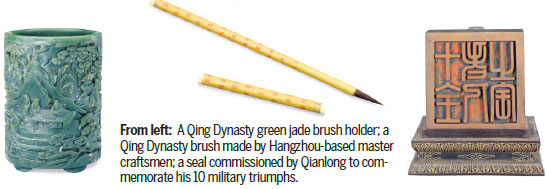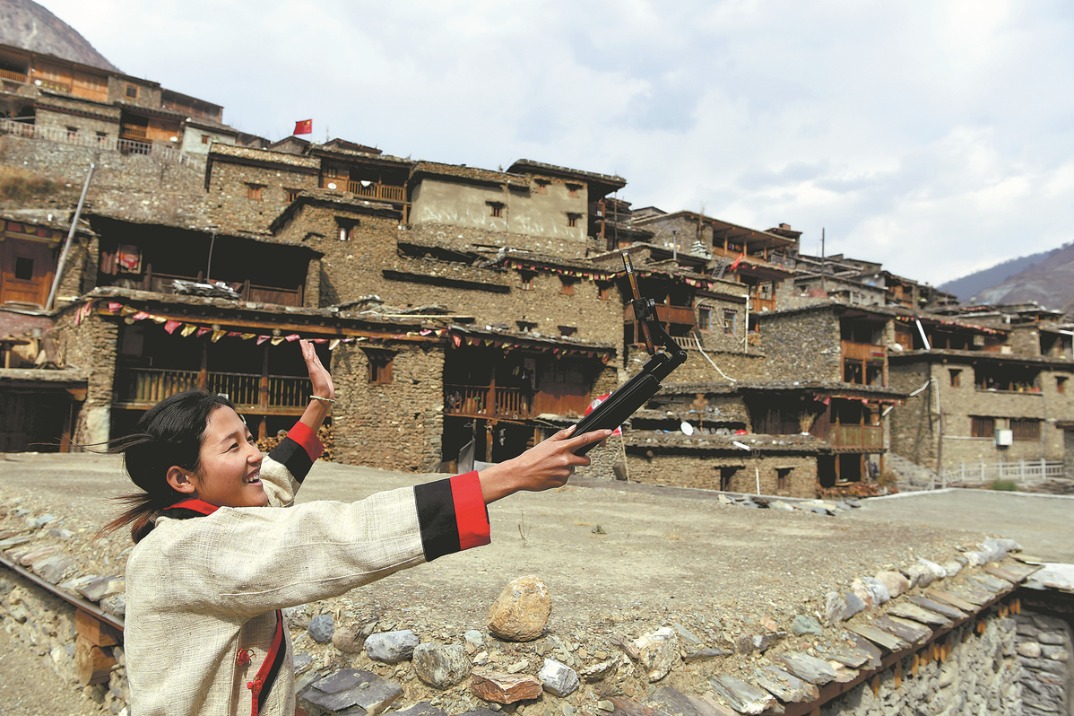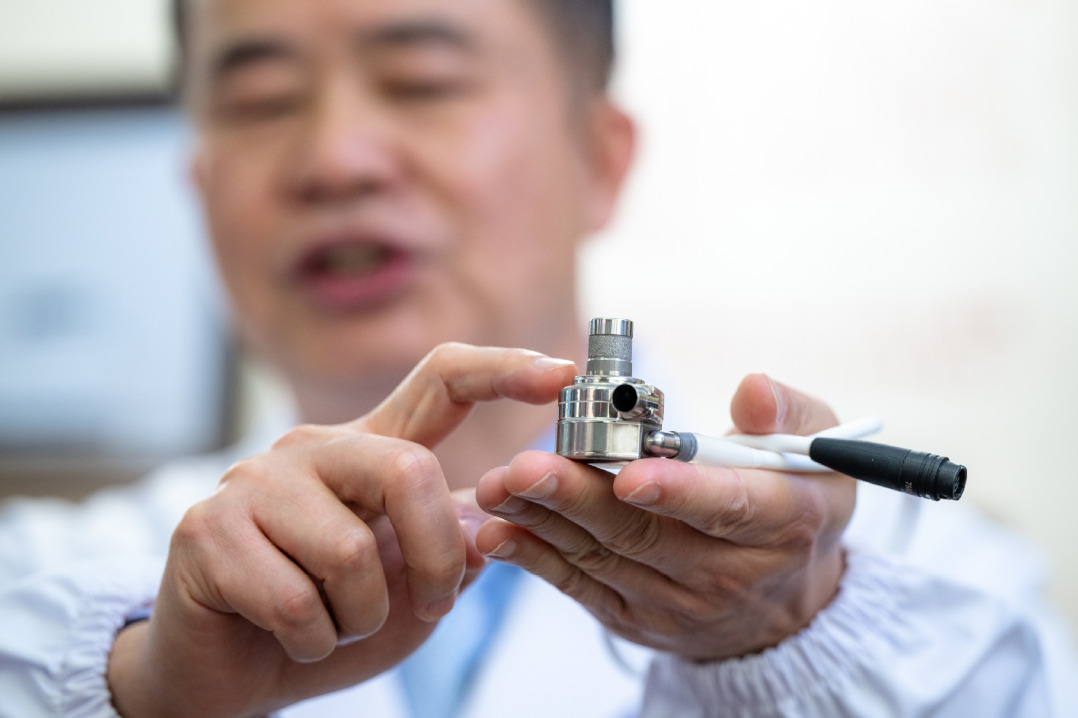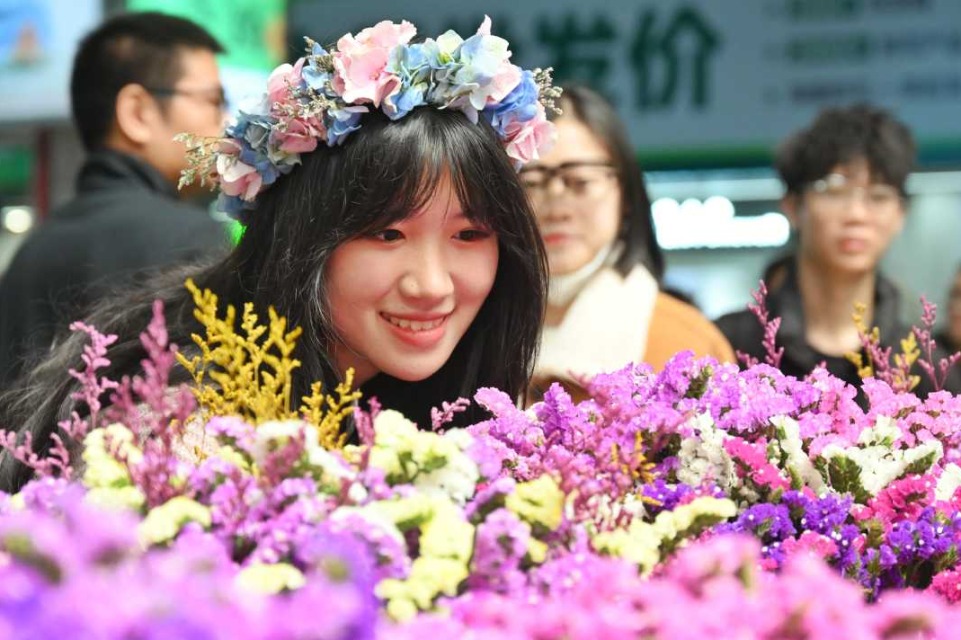King of the road and man of letters

Emperor's penchant for travel was tightly bound to his reputation for being highly educated
Judging by the evidence, Emperor Qianlong of the Qing Dynasty(1644-1911) loved to be on the road: He traveled 11 times to Shandong, the hometown of Confucius, whose musings became almost holy writ to generations of rulers.
However, it was his trips to Jiangnan, areas south of the Yangtze River, that are better known to modern-day Chinese, partly thanks to period TV dramas loosely based on these journeys.
| Emperor Qianlong's Journey to the South, a long scroll painted by court painter Xu Yang depicting the emperor's first trip to Jiangnan in 1751. Photos Provided to China Daily |
In these renditions, which invariably romanticize Qianlong (1711-1799), the Qing Dynasty's longest-reigning emperor often comes across as a dashing man whose appeal lay as much in his courtly style as in his courtships. And Jiangnan, known for its strong literary tradition, was a natural place for the emperor to wield his folding fan and show off his prowess with words.
He would no doubt have objected to many aspects of this image, but there is at least one he would have agreed with: Power aside, he was indeed a man of words and a rightful heir to the country's millennia-old literary tradition.
As such, it was almost obligatory for him to pay visits to Jiangnan, the spiritual home for any Chinese of his time who considered himself - rarely herself - a member of the literati.
Ma Shengnan of the Palace Museum in Beijing says: "What's special about Qianlong is the fact that, as an emperor of ethnic minority descent, he used this tireless literary pursuit - throughout his life, the man himself penned an astronomical number of poems, 90,000 of them - as a way of gaining legitimacy for his rule.
"In history, there were only two groups of ethnic minority people that had ever ruled over the whole of China. The Manchus, founders of the Qing Dynasty, who hailed from the frozen plains of the far northeast, were one of them. From the very beginning, generations of Qing rulers strived to embrace the classical majority culture, a policy Qianlong implemented with heart and soul."
Ma is the curator of an exhibition at the Zhejiang Museum in Hangzhou, the largest on the emperor since 2015, when the Palace Museum mounted a show with works of painting and calligraphy within its holding. For the 2015 display, all the selected works were from Shi Qu Bao Ji, an enormous compilation the emperor commissioned based on his royal collection.
The current exhibition at the Zhejiang Museum features 202 pieces, with 168 from the Palace Museum and most of the rest from the Zhejiang Museum. On display are various articles from the emperor's own study in his royal palace, the Forbidden City (today the Palace Museum). These include a white jade brush rest in the shape of a mountain, an ink bed, a duck-shaped water holder and a dark green jade brush pot with vividly carved people in different scenarios, against a backdrop of rocks and pine trees.
It is worth noting that the scenes were meant to depict the private garden of a noted scholar and court official from the Song Dynasty (960-1279), a period that long ago came to represent a pinnacle in Chinese art and literature. Emperor Qianlong, a diligent history scholar and passionate art collector, long admired and even sought to emulate the artistic heights reached by Song (and its rulers, best represented by Emperor Huizong, possibly the greatest emperor-artist of all time.).
Qianlong avidly collected Song Dynasty antiques, including a pale green porcelain brush wash, whose demure color and minimalist design went against the riotous, decorative style more commonly associated with the reign of Qianlong.
The piece was from the royal kiln of the Southern Song Dynasty (1127-1279), a period during which a beleaguered Song court moved its capital from Kaifeng, in what is now the central province of Henan, to Hangzhou, capital of Zhejiang province, and which lies at the heart of Jiangnan. (For those unfamiliar with Song history, the empire spanned two periods: the Northern (960-1127) and the Southern. Constantly defending itself against the harassment of Jins (the ancestors of Manchus), Mongols and others, the empire shrank by one-third during the second half of its existence. However, the relocation of the capital to Hangzhou served to further enhance the literary ambience for which the city was already known.
Qianlong, whose ancestors constituted a constant source of pain for the Song empire, longed for classical beauty. The aforementioned pale-green brush wash was among his most treasured collectibles. The emperor also used a writing brush made especially for him by master brush-makers in Hangzhou. And this predilection for the life of a literary-minded man influenced other aspects of the emperor's life - and his collection, filling it with a sensitivity unusual in a strongman.
The exhibition features a red-lacquered wooden box with an iron handle. Two ferocious dragons playing with a fireball adorn the side of the box; the inside is compartmentalized, with sections intended for different things: food, tea and, of course, paper and brushes. The box, dubbed a mountain touring tool, was popular in the Song era, when people with similar tastes and views formed small literary groups and frequently went on outings, to drink tea, compose poems and be inspired by nature. The box, which invariably appeared on such occasions, was often an object of beauty in itself.
Other lacquerware is on display, including a box in the shape of a musical instrument known as the guqin, and another one whose cover is decorated with a repetitive pattern composed of fallen plum followers being carried away by water. Both were made during Qianlong's reign, yet both exude a melancholic beauty, thanks to their decorative motif.
The most concrete proof of the emperor's Song mania comes in the form of his own portrait, painted by the court painter Yao Wenhan at his commission and titled Emperor Qianlong Giving Appraisal to Antiques. In the scroll, painted purely with dark ink, the emperor appears as a Han scholar in flowing robes, Han being the majority Chinese group. The eunuch, meanwhile, is recast in the role of a shutong, or "book boy", teenage boys hired by scholars and would-be scholars to grind their ink-stick when they were in the mood for writing and to carry their books on the way to court exams in the capital.
All around, the emperor is surrounded by cultural objects from the bygone era, including copper, jade and porcelain ware. Right behind him hangs a landscape painting, one that clearly depicts the scenery of a lake-studded Jiangnan.
However, it is another portrait of his, one that constitutes part of the picture and shows the half bust of the emperor - and for that, part is a mirror image of the emperor's full-length portrait - which really captures the viewer's attention. The emperor, so relaxed to have taken one foot out of his shoe, is contemplating his roomful of treasures under his own mild gaze. Ma says the painting is the only one found anywhere depicting an emperor and featuring this picture-within-a-picture arrangement.
"But it was not as novel as it may seem; the painting is based on a Song Dynasty one that played the same visual trick."
Speaking of portraits, the exhibition has three of the emperor's most famous ones. One was painted about 1734, when the would-be emperor was 23. Again, he is dressed in typical Han style, in an idyllic rural setting (with a deer and a hoe-carrying boy). The second is a world apart from the first, depicting an emperor wearing his heavily embroidered royal gown, seated on the throne. The man in this picture is in his 70s or 80s, his tightly closed lips and slightly gloomy eyes contrasting with the splendor in which he is wrapped.
The third was also painted in the emperor's twilight years. The writing in gold on the upper right side of the painting clearly states who the painter was, Giuseppe Castiglione (1688-1766), an Italian Jesuit missionary who impressed three generations of Chinese emperors - Qianlong, his father and grandfather - with a fusion style that merged Western and Chinese aesthetics and painting skills seamlessly on paper.
"With his vivid brush stroke, Shining restored to me my long-lost youth," the emperor wrote in an amused tone, calling the painter by his Chinese name, Lang Shining. "Who is this? Those who come across it must have wondered."
In the painting, a middle-aged Qianlong, again dressed in Han style, is holding a branch of plum flowers in the company of another man. The deep blue background - an unusual touch that belies the painter's "foreignness" - adds a surreal sense and helps highlight the figures in the foreground.
Le Qiaoqiao, a researcher with the Zhejiang Museum, says: "Between these three paintings is a man who ruled over one of the world's largest empires of his time, who is ever conscious of his own cultural legacy - Qianlong pushed for the standardization of the Manchu language - and who, at the same time, fell genuinely for another culture and art tradition, which he embraced and promoted tirelessly."
zhaoxu@chinadaily.com.cn

(China Daily European Weekly 10/20/2017 page18)
Today's Top News
- Documentary revisits ping-pong days of 1971
- China assessing US messages of hoping to hold tariff talks
- Washington and Kyiv sign economic accord
- Strong fiscal, monetary policy support expected in pipeline
- US business community alarmed by tariff impacts
- Resilience of export firms bearing fruit































